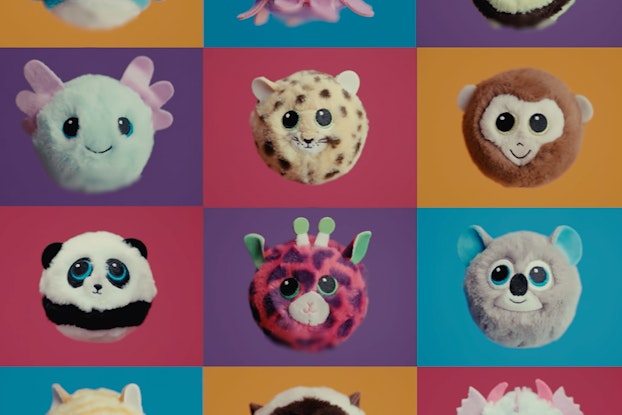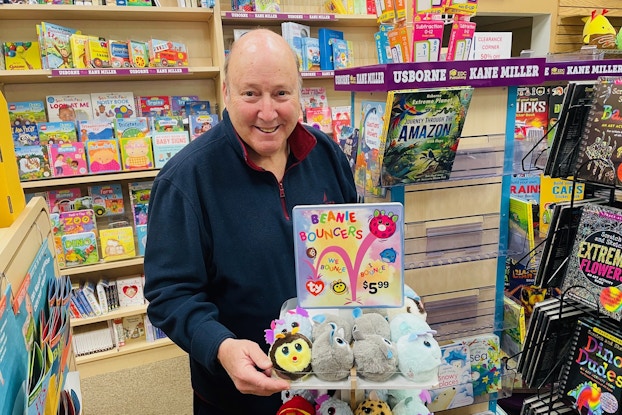
Why it matters:
- Ty Inc. Founder Ty Warner built a fortune worth billions with the Beanie Baby plush toy craze in the 1990s. Now the company is using lessons learned then to maximize the brand’s collectibles appeal to score a new hit, its first line of bounceable plush toys, just as products and experiences with (low-tech) nostalgia appeal gain heightened consumer interest.
- Toys are a $42 billion market in the United States, according to The Toy Association and research firm Circana.
- Plush toys, the category Ty Inc. is known for, was one of the strongest growth categories in 2024, with sales up 1%, while the overall industry was down slightly.
The Beanie Babies plush toy craze in the 1990s made toy company Ty Inc. an industry superstar and made its founder, Ty Warner, a billionaire.
Now, the company’s latest extension of the Beanie brand is capturing some of the magic that made Beanie Babies a collectible craze two decades ago.

Interested in a small business membership?
Find out how the U.S. Chamber of Commerce can help your company grow and thrive in today's rapidly-evolving business environment. Connect with our team to learn how a small business membership can benefit your bottom line and help you achieve your goals.
In July, Ty Inc. introduced Beanie Bouncers, a combination of a bouncing ball and a collectible plush toy.
The four-inch balls are wrapped in soft plush and are designed to represent different characters, most of them animals with names reminiscent of the original Beanie Babies, such as Leggy the Octopus or Buzzy the Bee.
But unlike Beanie Babies, these toys are designed to be able to bounce up to 50 feet, adding a play component that the original Beanies didn’t have.
When he announced the Bouncers over the summer, Founder Ty Warner said his aim was to put a new spin on one of the oldest and best-selling toys known to mankind—the ball.
“This is plush you can toss, catch, bounce, roll, kick, bowl, and collect,” Warner said in July.
The toy industry always talks about innovation and Beanie Bouncers are a prime example of why that doesn’t always mean high-tech.James Zahn, Editor-in-Chief of The Toy Book
The driving force behind Beanie Bouncers and other new ideas at Ty is “all Mr. Warner,” Jose Verger, Vice President of Sales, told CO—.
“He is still extremely involved on 100% of all our products,” Verger said.
The Bouncers arrived in stores last fall and were a holiday hit, and they’re looking to be the company’s most successful new launch in the past five to six years, Verger said.
“You have the cuteness factor of a Beanie Baby, but you also have the play value,” he said.
Part of the success is because they appeal to all ages, Verger said. “We even have adults buying them. You can hold them, squeeze them, use them for stress relief.”
Beanie Babies expands amid low-tech nostalgia trend
Beanie Bouncers’ launch coincides with the rise of “analog wellness,” what the Global Wellness Institute highlights as a key 2025 trend. “Trailblazed by Gen Z and millennials, more people are hungry for all kinds of retro, pre-digital hobbies and experiences that restore the tactile and touch, the attention that comes with making, and the social gratification,” from bird-watching and ceramic classes to snapping photos with Polaroid cameras, according to GWI’s 2025 trend report. And this embrace of nostalgia and desire to unplug is reflected in the popularity today of “comforting plush toys” like the hot Squishmallows collection, said Elia Auchane, Retail Strategy Consultant at WSL Strategic Retail, in a post on the future of wellness.
[Read more: Retro Rewards: How Businesses Are Monetizing the Nostalgia Trend to Win Over New Customers]

The Beanie Babies playbook: Low prices and collectible appeal
With Beanie Bouncers, Ty Inc. is following the playbook that made Beanie Babies a success. A key strategy is keeping the price low, at $5.99, just one dollar more than the $4.99 price of the original Beanie Babies.
Ty provides retailers with a specially designed display carousel that prominently displays the $5.99 price.
“We want to make sure to communicate instantly the very low price,” Verger said. “If they don’t see the price right away, they’re going to think it costs a lot more,” he said.
Another strategy is periodically “retiring”—or removing from distribution— Beanie Bouncers characters to enhance their collectability. Ty also is sticking to the company’s tradition of avoiding mass merchants and promoting sales to independent stores and specialty retail, including museums, zoos, candy stores, convenience stores, and drugstores.
Kenny Sarfin, Owner of the independent Books & Greetings store in Northvale, N.J., said he liked the Bouncers so much that he ordered a second display stand from Ty right away. He keeps one in the front of the store and one in his toy department.
The toys sold well over the holidays and Sarfin is eager to get more in stock. “It was a perfect Christmas gift, a perfect stocking stuffer, and now I would like to play it up for Easter,” he said.
[Read more: Trend Forecasters on the 6 Consumer Trends Set to Impact Business in 2025]

Carving a new niche in the $42 billion U.S. toy market
Toys are a $42 billion market in the United States, according to The Toy Association and research firm Circana. While overall U.S. toy sales were down in 2024, plush toys—Ty’s specialty—was up 1%.
Ty Inc. was founded in 1986 and was mostly known for its plush stuffed toys. Its sales exploded after it began selling Beanie Babies in 1994.
Ty Inc., as a private company, doesn’t reveal income or sales figures, but the success of Beanie Babies catapulted it into the top ranks of U.S. toy companies. It also made founder Warner a billionaire, with his wealth valued at $6.9 billion by Forbes.
With Beanie Bouncers, Ty Inc. appears to have another hit, even if they don’t match the success of Beanie Babies.
“Beanie Bouncers have been well-received by retailers, kids, and collectors since day one,” said James Zahn, Editor-in-Chief of The Toy Book, the leading toy industry trade publication.
“The toy industry always talks about innovation and Beanie Bouncers are a prime example of why that doesn’t always mean high-tech,” Zahn said. “Sometimes the most straightforward ideas, like combining plush with a ball, can be a big hit,” he said.
The Beanie Babies craze probably never will be duplicated, Zahn said. “The world was a very different place back then and Ty Warner managed to launch the right thing at the right time, and everything was in alignment,” he said. “From the perfect size, price, and form factor to the growing prevalence of the internet driving the collector frenzy and fueling the secondary market to the deep assortment of characters housing something for everyone, it was just right across the board,” he said.
“Ty probably doesn’t get enough credit for this, but the character-driven world of Beanie Babies has inspired a playbook that’s still in use across the toy industry, particularly in the plush category,” Zahn said.
CO— aims to bring you inspiration from leading respected experts. However, before making any business decision, you should consult a professional who can advise you based on your individual situation.
CO—is committed to helping you start, run and grow your small business. Learn more about the benefits of small business membership in the U.S. Chamber of Commerce, here.







